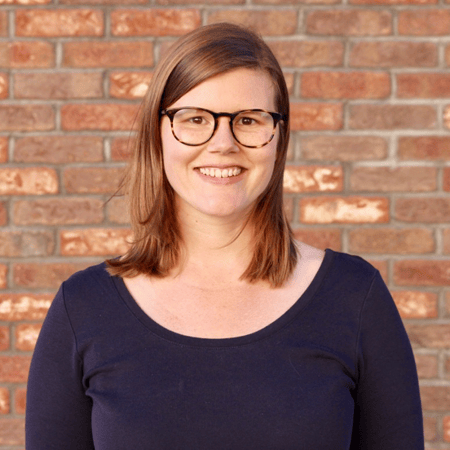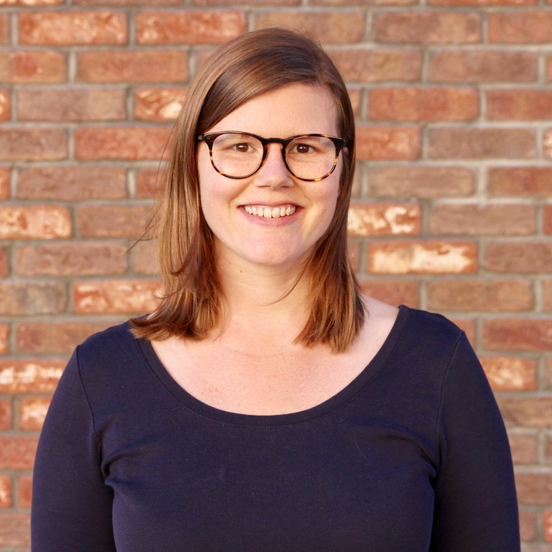About the episode
Duplicated work, missed opportunities, dropping the ball. When marketing teams are siloed, it’s hard to know what’s happening beyond your immediate work and even harder to work cross-functionally to create better campaigns.
Ashley Kemper, the head of acquisition marketing at Asana, joins host Matthew Kammer to discuss why Asana is merging the acquisition and organic marketing teams, how they work together on projects and campaigns, and how they’re growing through content marketing by bringing the best thinking from both sides of the equation.
You can connect with Ashley on her website.
Don’t have 30 minutes to spare? Jump ahead to key sections outlined below, or keep scrolling for a full transcript of the episode.
- [03:10] When did Asana decide to bring together the acquisition side and organic side
- [11:20] Why don’t other companies merge the organic and paid teams?
- [12:46] How do organic and paid work together at Asana?
- [14:10] Where does content marketing fit into the acquisition strategy now?
- [17:18] When you’re doing top-funnel paid content distribution campaigns, how do you carry someone through to the next stage?
- [22:22] Where have you found success with paid content distribution?
- [23:50] How do you maintain a culture where you balance tried and true acquisition channels with newer ones like content?
"You need somebody who can think cross-functionally within their own team and teammates who are willing to work together."
Episode is brought to you by
-

Matthew Kammerer
Show Host -

Vanessa King
Producer -

Joshua Schnell
Producer
Show Transcript
Matthew: How did you first get started in marketing?
Ashley: I started out in journalism at first, I really loved the storytelling piece of journalism and was already interested in how digital could play a role in delivering stories in new ways. Once I got out in the field and had my first few jobs, marketing seemed like a natural fit to bring storytelling and digital experiences together.
My first dedicated marketing job was at an agency in New York, and I got the chance to work with dozens of clients across all kinds of marketing channels. So in the span of a day, I’d do everything from launching an email campaign for a big ecommerce client to prepping social media posts for a non-profit or doing paid search audits for a manufacturer. I did that for about four years and it was the best crash course in digital marketing that I could have asked for.
Matthew: How long have you been at Asana and how has your role evolved over the years?
Ashley: I’ve been here for going on four years. I actually started out as a web marketing manager really focused on optimizing the user experience of Asana.com. In that role, right when I came on board I got to tackle a pretty massive rebranding effort that included rebuilding the website from the ground up in my first six months on the job, which was quite the amazing experience.
Later I started SEO and international marketing programs, really basic fundamentals, and then got to hire some amazing folks to scale those programs further. Just this year I had the opportunity to take over the entire acquisitions program at Asana and got to consolidate our paid and organic teams in an effort to create one cohesive user experience. So, it’s been a huge challenge to wrangle all of the moving pieces across those teams but I like to think of it as a big puzzle. It brings fun challenges every day and I get to work with some super-smart people to figure it out.
Matthew: That’s awesome. How was the decision made to bring together the acquisition side and the organic side?
Ashley: We were growing the team, we were looking for ways to scale, and we felt that there was this huge opportunity if we could get the people who are making content to sit right next to the people who are paying to promote that content and building the landing pages to drive access to it.
There seemed like there were some amazing synergies to be had if we could align the goals. So rather than having an organic team whose goal is just to create content and drive keyword rankings and a paid team whose goal is to spend budget efficiently and drive signups, what if we had one shared team with a shared goal and align all activities against that.
Matthew: That’s super exciting and makes a lot of sense. How does your background in journalism and working with publishers influence what you do now as a marketer?
Ashley: I’ve been really lucky to see some amazing journalists in action during my career. I started out spending some time at National Geographic working in their digital media department at NationalGeo.com and then worked at Agence France Presse, a French newswire similar to what you see in the States. And they’re all about delivering content in real time. Of course, NatGeo is known for their rich digital experiences, and that real-time and compelling UX is a foundational element to everything that I’m aspiring to do at Asana. So it really helped set the course for what I’ve been able to achieve in my career.
Matthew: Asana is growing super fast. as the head of acquisition marketing, what is your day-to-day right now?
Ashley: Right now, I do recruiting all day long. One of the biggest things that I can do to help my team and to help Asana be successful is to hire even more smart, ambitious, and curious people. We are growing so quickly and there is never a shortage of things to be done. So I spend a lot of time each day doing interviews and prepping recruiting materials to make sure that we grow, but also to make sure we grow the team in a really thoughtful way that will withstand the next several years.
The acquisitions team also has some nice little rituals. We start every day with a 5 minute standup to share our top daily priority, and that’s a nice way to touch base an align on work before we run off to execution mode for the day. And in between, my days tend to be pretty collaborative. So meeting with agencies to review results, meeting with my team to discuss upcoming budgets and experiments, and of course, meeting with designers and web developers to talk about new landing pages and web projects that are coming up.
Matthew: Let’s hop back to the recruiting for a little bit. What do you look for when you do that sort of recruiting?
Ashley: Of course, I look for functional expertise. I like people who have done the job. But even more than that, I look for people who are really smart, really ambitious, and curious. I think someone who is curious and wants to learn has a much higher likelihood of being successful than somebody who already knows to do the job. So I look for people who have that appetite to come on board and figure out ways to make things better.
Matthew: I struggle with making sure the playbook is up to date as you hire and scale that team to make sure people are successful up front. What do you do to ensure success? I see sometimes it takes six months for people to get into a position fully.
Ashley: We have a lot of great structures here at Asana. We always have an onboarding buddy on the acquisitions team for any new member and the onboarding mentor’s job is to make sure the new hire has a project they can work on from day one. Usually that will be a small experiment, something they can dip their toes into and get them familiar with how we work as well as what goals we’re trying to achieve.
And then we always keep a backlog of projects that are in our wishlist. So things that if we had an extra day in the week, we’d like to work on. When we bring on a new member of the team, that’s a great starting place. They know we’ve put at least a little bit of thought into what should happen and they can start figuring out some of the execution and tactical details until they’re fully up to speed on the more strategic end of things.
Matthew: Does everyone have a chance to be an onboarding buddy?
Ashley: It’s definitely rotation. We like people to have been here for six to twelve months so that they have been fully onboarded themselves. But we’re looking for onboarding mentors that can really help shape and craft a great experience for their new teammates. We make exceptions and definitely think through it on a case-by-case basis to make sure that it’s a good experience on both sides of the equation.
Matthew: Is your whole acquisition team there in San Francisco or is it pretty spread out now?
Ashley: Today, our acquisition team is all based here in San Francisco but we are actively hiring for our first two international acquisition team members in our Dublin office and will be likely expanding beyond there in the near future.
Matthew: Are you doing any paid campaigns for acquisition on the team member side?
Ashley: Yeah, we are. We recently built up our employer brand and recruiting marketing teams and we’re actively partnering with them. Some of that is on the awareness and promotion side, getting out there the news about how great Asana is doing, sharing company events and promoting those online. Some of it is more crafted as almost a direct response campaign in recruiting, driving people to our Glassdoor listings or our own jobs listings to get them to apply. We have a mini recruiting funnel experience set up as well.
Matthew: Can you share any early wins in that area?
Ashley: It is definitely a challenging place to really measure results. There’s so much seasonality in the recruiting cycles that we see and so many outside factors in what causes people to apply for jobs.
One fun experiment that I can share that we recently ran—we were targeting some really key engineering roles that we wanted to fill in New York and San Francisco and we knew that we needed to go beyond just the standard digital ads and recruiting tactics to make a difference with these candidates who are so highly sought-after.
So we actually went with a completely different approach and ran an out of home campaign that included media strategically placed near tech companies that we were hoping to recruit from. So we were looking at where our ideal candidates spend their days, we placed media in those areas and we were able to see a significant increase in traffic to our jobs pages on our website during the period that the campaign was live. That was an example of a time that we pulled out all the stops to partner with our recruiting team and wanted to make a difference for them in their pipeline.
Matthew: Let’s get back to talking about the nitty gritty of organic and paid. What channels do you manage in your current role?
Ashley: My team manages lots of different channels. On the paid side, we have paid search, social, programmatic, direct media, even some out of home at times. Organically, we are doing lots of content distribution of course, and then we also manage web production on our team.
Matthew: Why do you think most companies don’t bring the organic and paid sides together?
Ashley: That’s a great question, and I think honestly it’s just easier to keep things separate. There are quite fundamental differences in the day to day work of those teams. You have the paid teams who are very dollars and cents, they spend their day balancing budgets, optimizing campaigns, generating spreadsheets, making reports. Then you have the organic team where you’re thinking about user experiences, crafting web content, doing outreach to potential partners, doing some influencer marketing, so the functional work is quite different and I think that’s the barrier that holds back a lot of companies.
You have to be willing to take on a lot of internal overhead to bring those teams together. You need somebody who can think cross-functionally within their own team and you also need teammates who are willing to work together. I need my paid team to know enough about organic to reach out and ask the right questions and collaborate on the right things, and vice versa. I need an organic team that understands paid to the degree that they can help inform campaigns that are going on. So, it requires a bit of extra effort from everybody but I think it pays off in the end.
Matthew: Last season we spoke a bit about the challenge of sales working with marketing. How do organic and paid work together?
Ashley: On my team I haven’t seen so much headbutting as missed opportunities, and that’s what really led to this change. Over time, I just kept seeing us either duplicating efforts or having some dropped balls because we weren’t sure exactly which team a task should fall to.
Content distribution is a perfect example of that. We weren’t sure if content distribution should live on the organic team, who is creating the content, or the paid team, who more traditionally manages budgets. So it was something that got deferred or downplayed for a long time. It just seemed silly that we weren’t able to do effective work because of where organization lines were drawn. By bringing the team closer together, it gives everyone a bit of flexibility in their mind to imagine what their role could be and gives them some ownership.
So the person Jessie on my team who runs SEO now feels empowered to run content distribution campaigns because she knows that falls within our team’s responsibility and she knows she has the full support of the paid team if she needs to reach out and ask for assistance.
Matthew: Well, that’s a perfect segue. How does content marketing fit into your acquisition strategy right now?
Ashley: Our content team sits right beside us on the marketing team, and they’re some of our biggest partners. We see content fitting throughout the entire marketing funnel and customer journey.
We’ve actually organized our content team by stage in the marketing funnel, so we have one writer who’s dedicated to acquisitions and top of funnel, and she does everything from ad copy to landing pages and more. Which brings a really nice consistency and cohesion to that entire segment of our user journey.
Matthew: And then how do you separate out the content that you’re looking at for top of funnel versus direct response?
Ashley: The way that we think about it at Asana is first we need to educate people on the category. So for a lot of folks the idea of a work management tool is a relatively new concept and not something that they’ve spent a lot of time investigating or thinking about. Often they just know that they have a problem on their team that they have to solve.
So that problem might be a lack of communication or feeling like their team is dropping the ball or work is moving too slowly. So first we need to develop top-of-funnel content that identifies with the problems that they’re having on the team that they run and is able to present them with the idea of a solution in this work management category.
Once we should them this promise land of what this category can deliver, that’s when we introduce Asana to them. We say, there’s this whole world of work management out there and here’s why Asana is the best for your use case. We develop separate content at that stage of the brand awareness level.
Then once we have them hooked and in a free trial of our product, that’s when we try to sell them on all of the features and use cases and more advanced, in-depth content that’s going to help not only them be successful, but to really help their team adopt and use the tool as well with them. That’s a big component of our product, making sure that it goes beyond the initial adopter and that we get the entire team that they’re managing on board and activated.So we separate out content at each of those phases.
Matthew: How do you distribute content at each stage of the funnel?
Ashley: On the very top of funnel side, we lean heavily into SEO. We have internal SEO experts and work with an SEO agency to manage optimization, outreach, and of course we do content distribution as well at top of funnel.
We treat content distribution for awareness almost like a brand ad that we’re just trying to get impressions with those people who are early managers in their career or in a new company and looking to effect change. We want to get Asana’s brand name in front of them so when they start to feel those pain points they know they can turn to us and we can help solve that problem.
Matthew: When you’re doing that top-of-funnel content distribution on a paid basis, how do you measure the success and carry someone through to the next stage?
Ashley: Our success metric for content distribution really is impressions that are driven. Like I said, we treat it a lot like a brand ad. We’re not looking for the immediate click, we’re not looking for an immediate sign up, although sometimes by happy coincidence we do see those success metrics.
We’re really just looking to get our brand in front of people. To make sure that we can continue the conversation, we have some retargeting campaigns set up. So once people have clicked through or viewed a resource on our website or a template or a landing page, we have retargeting campaigns that can continue nurturing them digitally and make sure that they come back and get a little bit more. So we’re leaving bread crumbs that lead them down the path of signing up.
Matthew: Retargeting is definitely a key piece of that. How do you make the decision on top of funnel, or maybe you’ve decided against this, but do you always run ungated content?
Ashley: We have experimented with gated content, and that is going to be a larger focus for us moving forward. We began experimenting with gated content last year and quickly learned that in order to be successful with gated content, you have to be really buttoned up on your alignment with sales and also your tooling implementation.
I think when we ran our first lead gen campaign, we discovered we have some room to grow in our tooling stack. So now we’re doubling down and investing in our infrastructure and are planning on scaling up our gated content and lead gen activities as soon as we feel like we have the tracking in place that we need.
Matthew: What tools are you currently using to help with that?
Ashley: We are currently in the process of migrating to Marketo, which is a heavy lift for our team but we’re really excited about the potential that it’s going to unlock once we have it in place. We want to be able to have really rich content engagements and map a user’s journey internally and then reflect that to the user.
So if we have a content piece that we are distributing that is all about running effective editorial calendars that someone clicks through and they see a template on our website, maybe they don’t sign up. Then we retarget them, get them back to a gated piece of content about how Refinery29 manages their editorial calendar with Asana, and then we can have a sales outreach that is really rich and beneficial to the user because we know all of the touchpoints that have happened. We know they’re likely in a marketing team, they need help running editorial calendars, and we can craft a solution that fits their exact use case.
Matthew: Now, communicating with the sales team to make sure they’re prepared for this is a common theme that I’ve heard. So how do you make sure sales is on board and on the same page?
Ashley: Of course it’s all about having good feedback loops. We need to be in touch with sales on a regular basis, not just leading up to the campaign launch but as soon as it does launch and then every day or week moving forward so we get some real time feedback and we can adjust our ad targeting and automated outreach accordingly.
One thing that we’ve also found in our particular case is that because Asana is so focused on use cases, we need to really help educate our sales team about what those use cases mean. So for Asana, marketing teams are some of our biggest users. So we need our sales team to be experts about marketing use cases and understand at a pretty detailed level how marketing teams operate. We need to spend just as much time educating sales teams about what we do as marketers so they can be successful, as we do educating them about the campaign itself.
Matthew: How do you communicate and share results?
Ashley: So, luckily for us, we have a neat work tracking tool that we use internally. It’s called Asana. We manage all of our campaign planning and experiment planning in Asana so there’s total visibility into what each team is working on.
On the acquisitions team, we have a backlog of new channels or content experiments that we want to run that we can get early feedback on from sales stakeholders, internal marketing folks. Then after the team has run it, it’s really seamless for us to publish out the results and get new ideas about how to action that and what our next round of testing should be like.
Matthew: I want to hop back to the content distribution one more time. When we’re talking about paid content distribution, where have you found success so far?
Ashley: We’ve been testing a lot of different channels. We started primarily on social, leaning into LinkedIn and Facebook. We’ve recently been experimenting with our own community, that is more of an organic channel but we’ve found some paid influencer opportunities there as well.
Of course, working with partners like Pocket and Sharethrough has been really exciting for us because we can balance targeting needs with some really high performing channels. We’re starting to see early success there as well.
Matthew: What sort of targeting do you layer in on those channels?
Ashley: There, we’re playing around with both the placements we’re listing and the regions we’re tapping into. Asana marketing is going to have a much more regional focus going into the next year. We’re thinking internationally and within the United States about how we speak to people.
We know that even as we’re focused on the marketing audience, which might seem super niche, marketers in a media company in New York operate very different than marketers within tech in San Francisco. We need to be aware of their needs and how to speak to them.
First nailing regional targeting within the US, and then as we expand internationally it will come more second nature to us.
Matthew: How do you maintain a culture where balance tried and true acquisition channels with newer ones like content?
Ashley: That’s a really hard challenge because it can be so easy to lean back on what’s worked in the past. On our team, we set aside specific budget and resources each month for experiments. Like I mentioned, we have a backlog of experiments in Asana and then it’s a matter of self-policing and making sure that we’re prioritizing the time and energy that it takes to run experiments. It could be a good amount of overhead to find new channel partners and get the contracts in place, set up tracking, implement the actual campaign, get the creative.
It’s just a matter of exercising that muscle so it becomes second nature on the team and that’s what people are excited about. Everyone on the team wants to find the next new big channel that we can call a win and scale up beyond experiment level.
Matthew: As you explore these contextual campaigns, have you had any success with direct response content?
Ashley: We’re definitely starting to think more about how content can generate some direct response for us. The first key part of that initiative has been actually putting together a content roadmap that would support it. Our initial content distribution strategy was really focused just on awareness, so we were creating awareness that didn’t require a response. It was more category awareness, maybe brand awareness.
Now, as we look into next year, we’re starting to produce content that is more direct response. Content around team resources, templates that can be created in Asana, and that’s content that’s both beneficial to the user and beneficial to us because it moves users further down funnel and is more likely to generate that trial start.
Matthew: So you can kick off a template and generate a free account all at the same time?
Ashley: Exactly. So somebody searching for a product launch template in Google could see a search ad for Asana, hit our landing page that talks about managing product launches in Asana, you click one button, enter an email, and you are set up in Asana with the template pre-populated that walks you through how to manage a product launch.
Matthew: Then how are you qualifying those leads to pass them over to sales?
Ashley: Beyond the initial sign up, we’re looking at what the user’s adoption looks like within the first 28 days. Are they active within their account? Are they inviting other users? We have a set of criteria that we use to start to evaluate how likely they are to become long-term paid users.
Matthew: Thanks so much for diving into that. I have a few closing questions for you. What advice would you give to marketers looking to take the next step in their career?
Ashley: The one thing that I can recommend that especially now as I am hiring and trying to build out a team, is that marketers spend more time talking to customers. Especially in the era of digital marketing, it can be really easy to think of customers as numbers in Google Analytics or numbers that we see on a spreadsheet.
It’s insanely important to remember that those numbers represent actual human beings who have read a piece of content or clicked on a link that you posted. Taking the team to partner with your sales team to join sales calls or go out with the customer success team and walk through a customer implementation with them, just getting to know the people who use your product builds so much empathy and makes you a better marketer overall because you understand what their actual desires and pain points are, and then you can be creative and come up with solutions to solve them.








